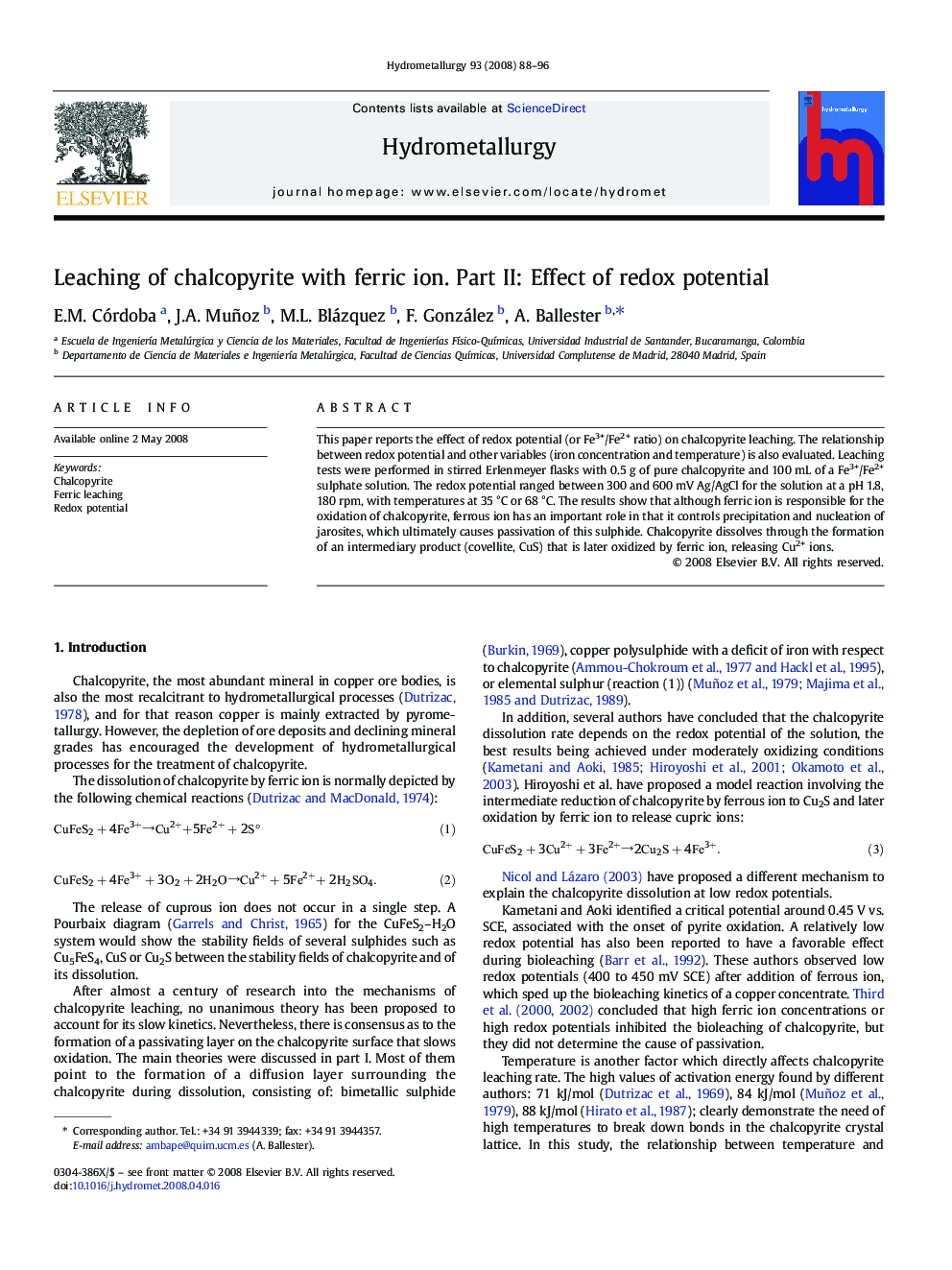| Article ID | Journal | Published Year | Pages | File Type |
|---|---|---|---|---|
| 213311 | Hydrometallurgy | 2008 | 9 Pages |
This paper reports the effect of redox potential (or Fe3+/Fe2+ ratio) on chalcopyrite leaching. The relationship between redox potential and other variables (iron concentration and temperature) is also evaluated. Leaching tests were performed in stirred Erlenmeyer flasks with 0.5 g of pure chalcopyrite and 100 mL of a Fe3+/Fe2+ sulphate solution. The redox potential ranged between 300 and 600 mV Ag/AgCl for the solution at a pH 1.8, 180 rpm, with temperatures at 35 °C or 68 °C. The results show that although ferric ion is responsible for the oxidation of chalcopyrite, ferrous ion has an important role in that it controls precipitation and nucleation of jarosites, which ultimately causes passivation of this sulphide. Chalcopyrite dissolves through the formation of an intermediary product (covellite, CuS) that is later oxidized by ferric ion, releasing Cu2+ ions.
